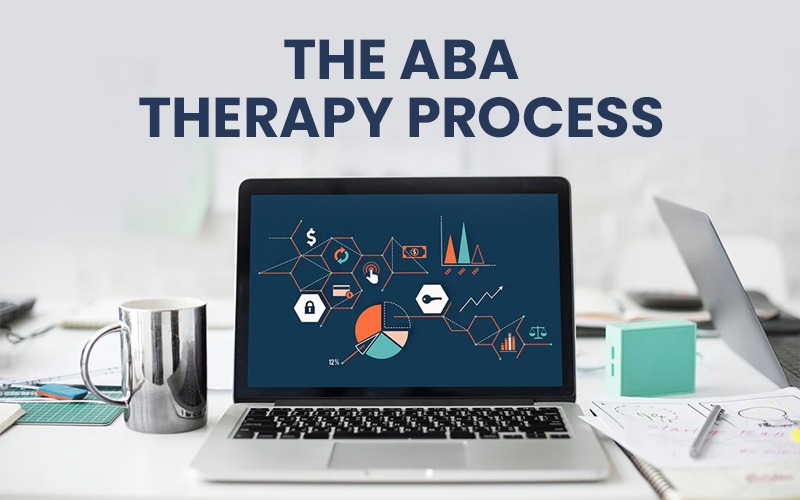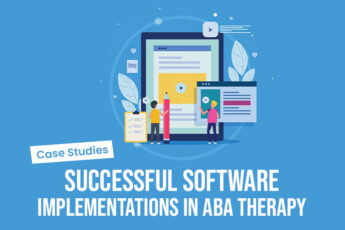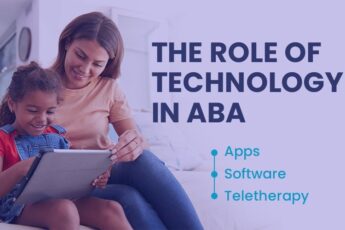Applied Behavior Analysis (ABA) therapy is a powerful tool for helping individuals with autism spectrum disorder (ASD) and other developmental disabilities navigate the world and reach their full potential. While the process can seem complex, it’s grounded in clear steps and is increasingly enhanced by the power of technology.
Step 1: Building the Foundation – Assessment and Goal Setting
The journey begins with a comprehensive assessment to paint a clear picture of the individual’s strengths, weaknesses, and areas for growth. This involves gathering information through:
- Interviews: Parents, caregivers, and educators provide invaluable insights into the individual’s daily life, challenges, and aspirations. What are their strengths? What are their struggles? What are the family’s hopes for the future?
- Observations: Directly observing the individual in various settings offers a window into their behaviours and skills. How do they interact with peers? How do they respond to different environments? What are their learning styles?
- Standardized Assessments: Tests like the Autism Diagnostic Observation Schedule (ADOS) and the Autism Diagnostic Interview-Revised (ADI-R) help diagnose ASD and measure specific skills. This provides a benchmark to track progress over time.
Furthermore, with this information, therapists collaborate with families to establish clear, measurable, achievable, relevant, and time-bound (SMART) goals. These goals might include developing communication skills, improving social interactions, reducing challenging behaviors, or mastering self-care routines. This collaborative approach ensures that the goals are meaningful and aligned with the individual’s needs and the family’s aspirations.
Step 2: Tailored Intervention – Crafting a Personalized Approach
Based on the assessment and goals, a personalized intervention plan is created. This involves identifying specific behaviours to address and using evidence-based ABA techniques to facilitate change. Some key elements include:
- Discrete Trial Training (DTT): A structured method for teaching new skills by breaking them down into smaller steps and providing reinforcement for correct responses. Think of it as building a tower, one brick at a time.
- Naturalistic Teaching: Integrating learning into everyday activities and real-life situations, promoting generalization of skills. The goal is for skills to become part of the individual’s natural repertoire, not just learned in a specific context.
- Verbal Behavior Therapy (VBT): Focusing on the function of language and teaching communication skills through verbal prompts and reinforcement. This helps individuals understand and use language to express themselves and interact with others.
- Functional Behavior Assessment (FBA): Identifying the triggers and consequences of challenging behaviours to develop effective interventions. The focus is on understanding the WHY behind the behaviour to address it effectively.
Step 3: Data-Driven Progress – Tracking and Refining
Accurate data collection is the lifeblood of ABA therapy, serving as the cornerstone for effective treatment. It empowers therapists to meticulously measure progress, identify areas for improvement, and adapt interventions as needed. To capture a comprehensive understanding of behavioral changes, therapists employ a variety of data collection methods, including:
Frequency Recording: This method involves counting the number of times a behavior occurs within a specific time frame. For example, a therapist might record how many times a child engages in self-injurious behaviors during a 30-minute observation period.
Duration Recording: In contrast, duration recording focuses on measuring the length of time a behavior lasts. Therefore, a therapist might record how long a child engages in a tantrum, providing valuable insights into the intensity and persistence of the behavior.
Latency Recording: Latency recording measures the time it takes for a behavior to occur after a specific cue. For instance, a therapist might record how long it takes a child to follow a verbal instruction, offering insights into their responsiveness and attention to cues.
Interval Recording: Finally, interval recording involves observing whether a behavior occurs during specific time intervals. Specifically, a therapist might divide a session into 5-minute intervals and note whether a specific behavior occurs during each interval, providing a snapshot of the behavior’s frequency throughout the session.
The collected data is then meticulously analyzed to identify trends, evaluate the effectiveness of interventions, and make adjustments for optimal progress. This data-driven approach ensures that the therapy is constantly refined and tailored to the individual’s evolving needs. In other words, by tracking progress and making evidence-based adjustments, ABA therapy becomes a dynamic and personalized approach to maximizing individual potential.
Step 4: Empowering Families – Parent Training and Collaboration
Parents and caregivers are essential partners in the ABA therapy process. Therapists provide comprehensive training to equip them with the skills and strategies to implement the intervention plan effectively at home.
This may involve:
- Direct Instruction: Demonstrating and teaching specific techniques to parents.
- Role-Playing: Practicing real-life scenarios to build confidence and fluency.
- Home-Based Programs: Providing resources and materials for parents to continue therapy at home.
Effective communication and collaboration between therapists, parents, and educators are essential for sustained progress.
Technology: A Catalyst for Transformation
Technology has revolutionized the way ABA therapy is delivered, making it more accessible, engaging, and effective:
Data Management Systems:
Apps and software solutions simplify data collection, analysis, and visualization, providing therapists with real-time insights into progress. This allows for more efficient and effective intervention adjustments.
Virtual Therapy Platforms:
Teletherapy allows individuals to access ABA services remotely, reducing geographic barriers and providing flexibility. This opens doors to wider access for individuals in underserved areas.
Interactive Learning Games:
Engaging digital games can motivate individuals to learn new skills and practice existing ones in a fun and stimulating environment. This transforms learning into an interactive and enjoyable experience.
Augmentative and Alternative Communication (AAC) Devices:
These devices help individuals with communication difficulties express themselves effectively using a variety of methods like pictures, symbols, or voice output. This empowers individuals to communicate their needs and desires more effectively.
Wearable Technology:
Smartwatches and fitness trackers can be utilized to monitor and track individual behaviours and physical activity levels, providing valuable data for therapy interventions. This offers a deeper understanding of how individuals respond to their environment and interventions.
Conclusion – DIBS: Empowering Individuals Through Innovation
At DIBS, we firmly believe in the transformative power of Applied Behavior Analysis (ABA) therapy. Moreover, we recognize that technology can be a potent force for enhancing the efficacy of this approach. Consequently, we are dedicated to developing custom software solutions that prioritize the following key features:
Data-Driven:
Firstly, our solutions empower therapists with robust data management systems. These systems allow them to meticulously track progress, personalize interventions, and ultimately optimize outcomes. Furthermore, they enable therapists to gain valuable insights into client progress, allowing for informed decision-making.
Individualized:
We understand that each individual’s needs are unique. Therefore, we provide flexible and customizable solutions that cater to these specific requirements. This ensures personalized and effective interventions tailored to each client’s needs. In addition, these solutions foster a collaborative environment between therapists and clients, promoting client engagement and positive outcomes.
Behaviour-Focused:
Our solutions equip therapists with powerful tools for analyzing behavioral data. As a result, they can identify patterns, understand underlying causes, and develop targeted interventions based on evidence. This approach allows therapists to create personalized treatment plans that address specific behavioral challenges.
Scientifically Validated:
We are committed to aligning our solutions with the latest research and evidence-based practices in ABA therapy. In turn, this ensures that our software is grounded in scientific rigor and supports the delivery of high-quality care. Moreover, our team collaborates with leading experts in the field to continuously refine and improve our solutions based on the latest scientific advancements.
Structured:
Lastly, our software offers user-friendly interfaces that streamline workflows, simplify data management, and promote efficient communication. This approach minimizes administrative burdens and allows therapists to focus on what matters most – providing high-quality care. Consequently, our solutions empower therapists to work more efficiently and effectively, ultimately improving client outcomes.
By embracing technology and collaborating with the ABA community, we strive to empower individuals to reach their full potential and live more fulfilling lives.
Disclaimer: This blog provides general information about ABA therapy and should not be considered medical advice. Consult with a qualified ABA therapist for personalized guidance and treatment plans.







Leave a Comment